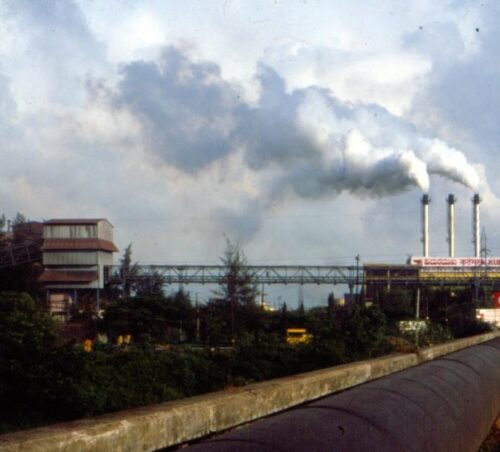Fossil fuels– coal, petroleum and natural gas, are sources of energy and lots of useful substances. They have been and still they are the back bones of the economic developments and the basis of the modern civilization. These are usually burnt to produce energy. But burning of fossil fuels is the root of most of the pollution and secondary problems that tend to threaten the existence of life on earth today. Here are some examples:
Burning of fossil fuels produces a number of seriously harmful pollutants -gaseous and particulate. Some of the gaseous pollutants produced on burning of fossil fuels are -Sulphur dioxide, carbon monoxide, hydrogen fluorides, hydrocarbons, and photochemical oxidants. The particulate produced on burning of fossil fuels are- dust, smoke, soot, aerosol, fumes, smog etc.
Solid and liquid aerosols that remain suspended in the atmosphere are called as particulates. Particulates can be defined as non-gaseous concentrations in the atmosphere. Hence these cannot be expressed in volume units. Their size is usually measured in microgram per cubic meter (µg/m3). 1 microgram (1µg) is equal to 0.00000004 oz. The typical sizes of atmospheric particulates range from 0.1µm to 1µm. These are small solid particles and liquid droplets that can pose serious threat to the quality of air. Smoke, dust, mist, sprays, chlorofluorocarbons (CFCs), fumes etc. are some examples of particulates.
Particulates are produced by human activities related to condensation or dispersion. The particulate matter can produce toxicity and respiratory problems like bronchitis and emphysema. Fluorides, lead, cement dust, potassium salts, smoke particles, plant spores, bacteria etc. are example of some other particulates.
Particulates may be organic or inorganic by chemical nature. Organic particulates originate from the combustion of fuels, automobiles and vegetation. Some of the organic particulates are Polycyclic Aromatic Hydrocarbons (PAHs), Aldehydes, Ketones, Peroxides, Esters and Oxidised and Polymerised Hydrocarbons etc. Inorganic Particulates originate from metallic oxides, sulphides and carbonates etc. These are produced on burning of fuels containing metals. Oxides of iron, vanadium, lead etc. are some of the inorganic particulates found in the sample of polluted air.
Particulate Matter found in air can be classified on the basis of the size of particles also. Those particulates which can be inhaled easily by human beings are called as Respirable Particulate Matter (RSPM).
However, some particulates consist of bigger particles and hence cannot be and must not be inhaled through air. Such particulates are called as Non-Respirable Particulate Matter.
When inhaled, both gaseous and particulate pollutants produced on burning of fossil fuels cause different types of lung and bronchial diseases. In atmosphere they cause destruction of ecosystems and loss of species. These pollutants are root causes of most of the local and global environments.
Since the fossil fuels are non-renewable and limited amount in the earth, these must be cared and conserved. Where burning of fossil fuels is un avoided, the efficient and pollution free technologies must be adopted to check the release of both the gaseous and particulate matter against their entry into the atmosphere. A continuous effort towards the research and developments of alternate and non-conventional sources of energy can alone solve the problems.




